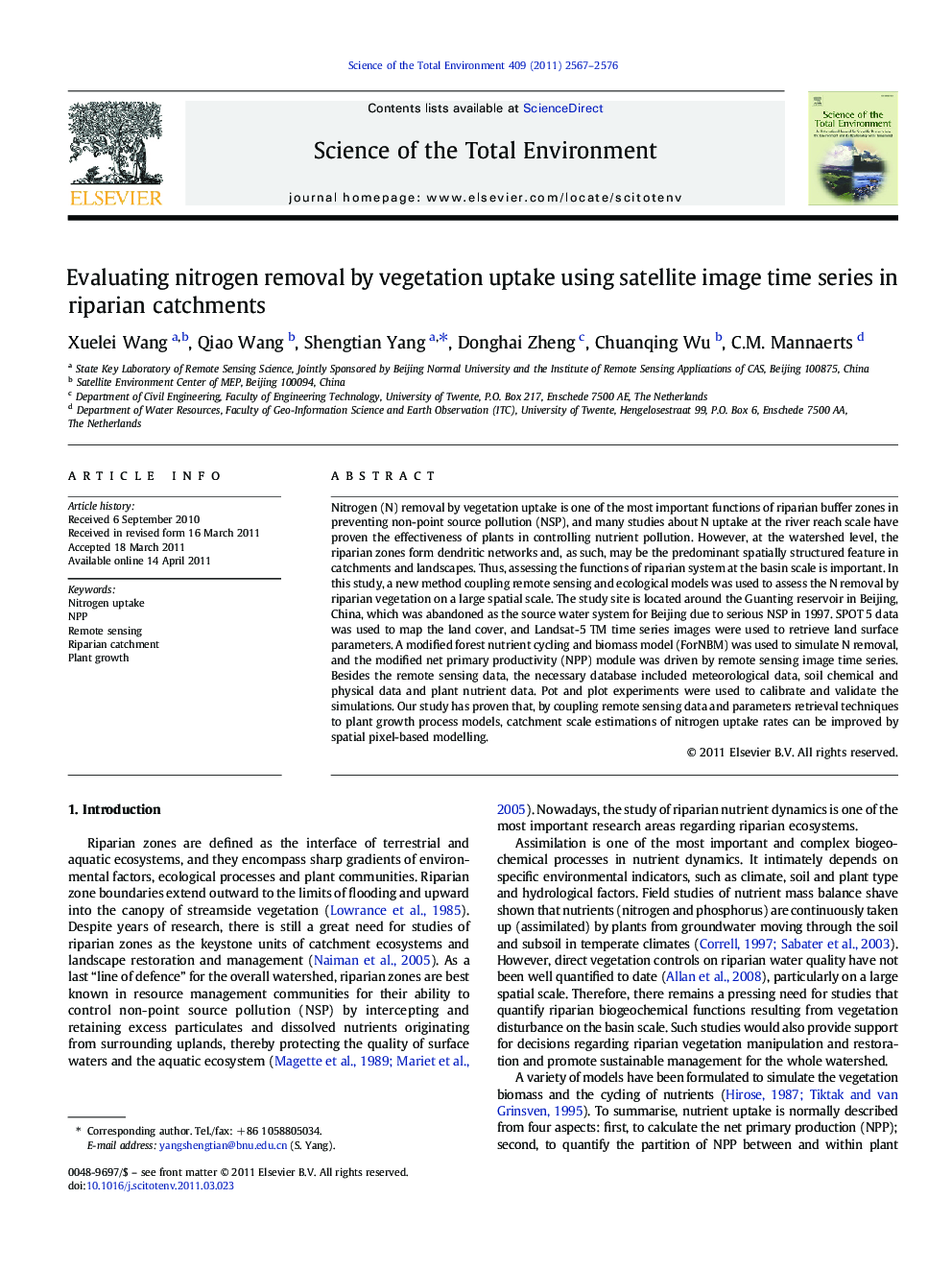| Article ID | Journal | Published Year | Pages | File Type |
|---|---|---|---|---|
| 4430141 | Science of The Total Environment | 2011 | 10 Pages |
Nitrogen (N) removal by vegetation uptake is one of the most important functions of riparian buffer zones in preventing non-point source pollution (NSP), and many studies about N uptake at the river reach scale have proven the effectiveness of plants in controlling nutrient pollution. However, at the watershed level, the riparian zones form dendritic networks and, as such, may be the predominant spatially structured feature in catchments and landscapes. Thus, assessing the functions of riparian system at the basin scale is important. In this study, a new method coupling remote sensing and ecological models was used to assess the N removal by riparian vegetation on a large spatial scale. The study site is located around the Guanting reservoir in Beijing, China, which was abandoned as the source water system for Beijing due to serious NSP in 1997. SPOT 5 data was used to map the land cover, and Landsat-5 TM time series images were used to retrieve land surface parameters. A modified forest nutrient cycling and biomass model (ForNBM) was used to simulate N removal, and the modified net primary productivity (NPP) module was driven by remote sensing image time series. Besides the remote sensing data, the necessary database included meteorological data, soil chemical and physical data and plant nutrient data. Pot and plot experiments were used to calibrate and validate the simulations. Our study has proven that, by coupling remote sensing data and parameters retrieval techniques to plant growth process models, catchment scale estimations of nitrogen uptake rates can be improved by spatial pixel-based modelling.
Research highlights► Nitrogen removal by riparian zones is simulated with remote sensing data and models. ► The simulation is calibrated and validated by 15pot and plot experiments. ► Spatial pixel-based modeling advocates catchment scale estimations.
